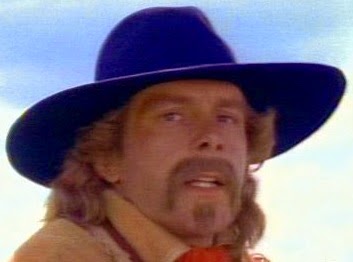 This is one, that has been on my to see list, as well as my to avoid list. A while back, I took a job that involved working with some kids from different countries (actually, 3 different countries). There was a group of four kids whom I didn't realize were all from the same country, Kazakhstan. I ended up spending a lot of time with those kids, a lot of it playing durak, a card game which they taught me that is very popular in the region. They had GREAT disdain for this movie, which is understandable, but I was also curious if the film deserved it's nefarious reputation.
This is one, that has been on my to see list, as well as my to avoid list. A while back, I took a job that involved working with some kids from different countries (actually, 3 different countries). There was a group of four kids whom I didn't realize were all from the same country, Kazakhstan. I ended up spending a lot of time with those kids, a lot of it playing durak, a card game which they taught me that is very popular in the region. They had GREAT disdain for this movie, which is understandable, but I was also curious if the film deserved it's nefarious reputation.The film seem to have been entirely created by having Borat present himself as a legitimate Kazakh, and speaking in poor English with wild points of view to various people he encounters. It seems that no one he encountered was in on the joke, making their reaction both natural and quite shocking at times.
This reminded me of the portion of the film Bad Grandpa that I saw. That character was presented to unaware people, taking outrageous actions which caused them to have odd reactions.
Borat (the film) was quite hard to watch at some points, as you could feel the uncomfortable positions the people were being put into. This is something I couldn't do. I wouldn't be able to mislead those people so, and stay in character. Too much sympathy would well up and I would have to break the truth to them.
It was also interesting, as it brought out the good in some people and the bad in others. Some tired to be kind and understanding of his odd points of view and lack of understanding of American culture. Others relished in agreeing with Borat's suggestion to wipe certain countries off the map. More than a few walked away (one even running away) in disgust and one group even called the police on him.
After reading about the film, it turns out the film was a great tourism boost for Kazakhstan, which is pretty ironic, considering that none of it was filmed in Kazakhstan.
While I am certainly no expert on Kazakhstan, this film did a very poor job of accurately portraying the country. The people in the country looked much European (which they were) where was Kazakhstan as a majority of it's citizens have an Asian ethnic background.
Sacha Baron Cohen just wanted to portray a backwards country. It is unfortunate he choose the name of an actual country to do so. He could have used the name of a fictional country and avoided upsetting an entire country. Surely the people he filmed wouldn't have known the difference. None of them could have found Kazakhstan on a map to start with.


















